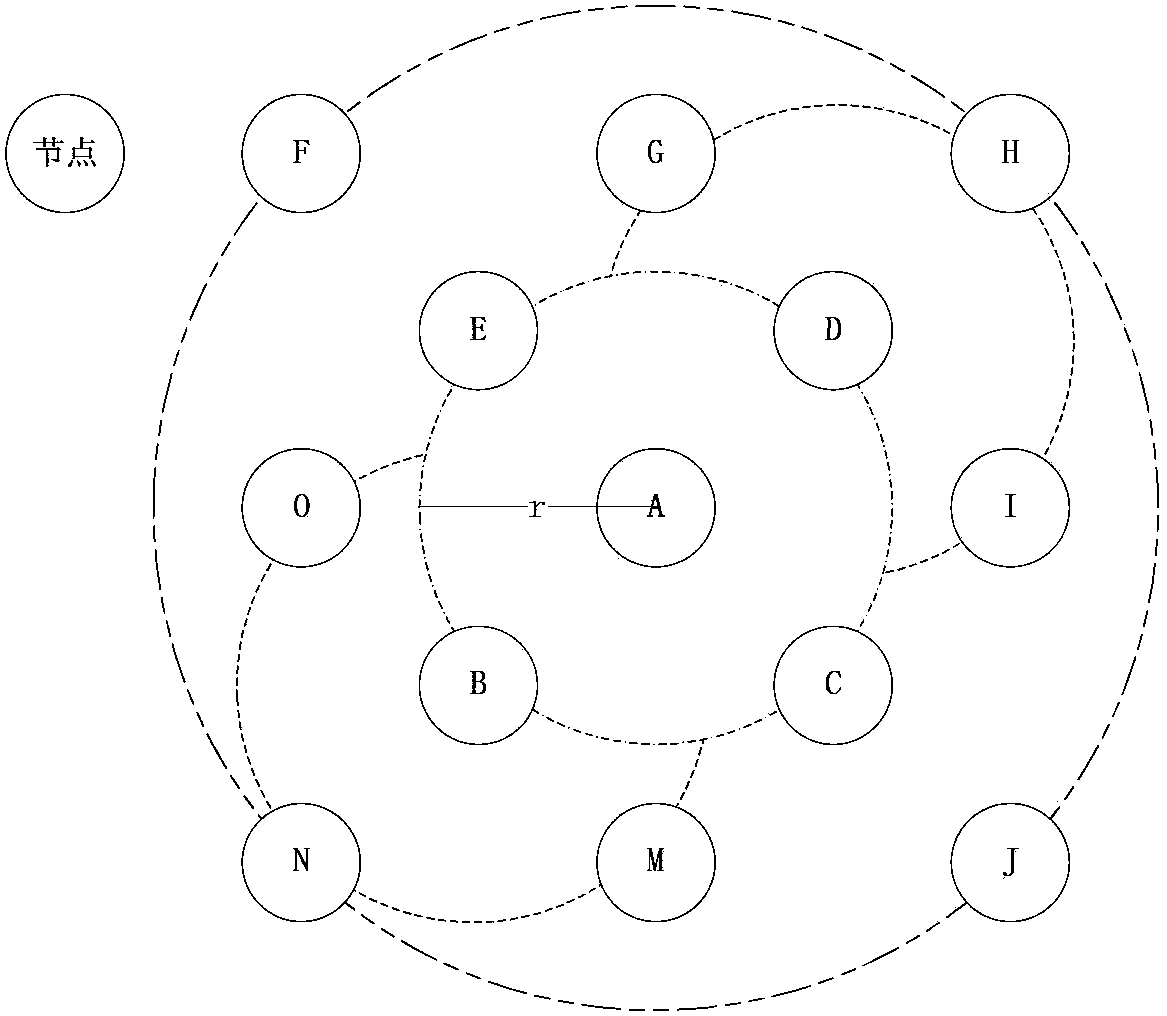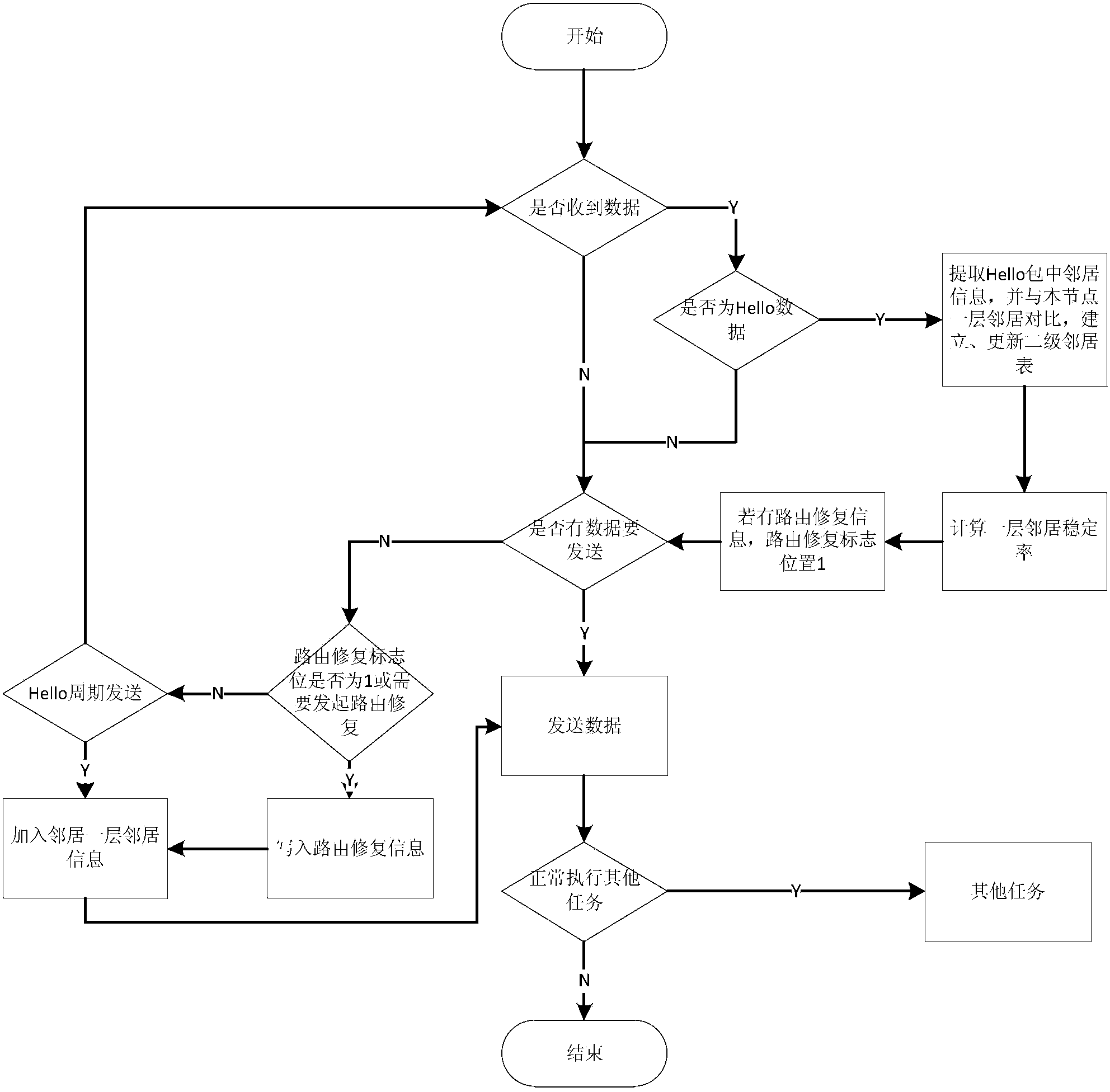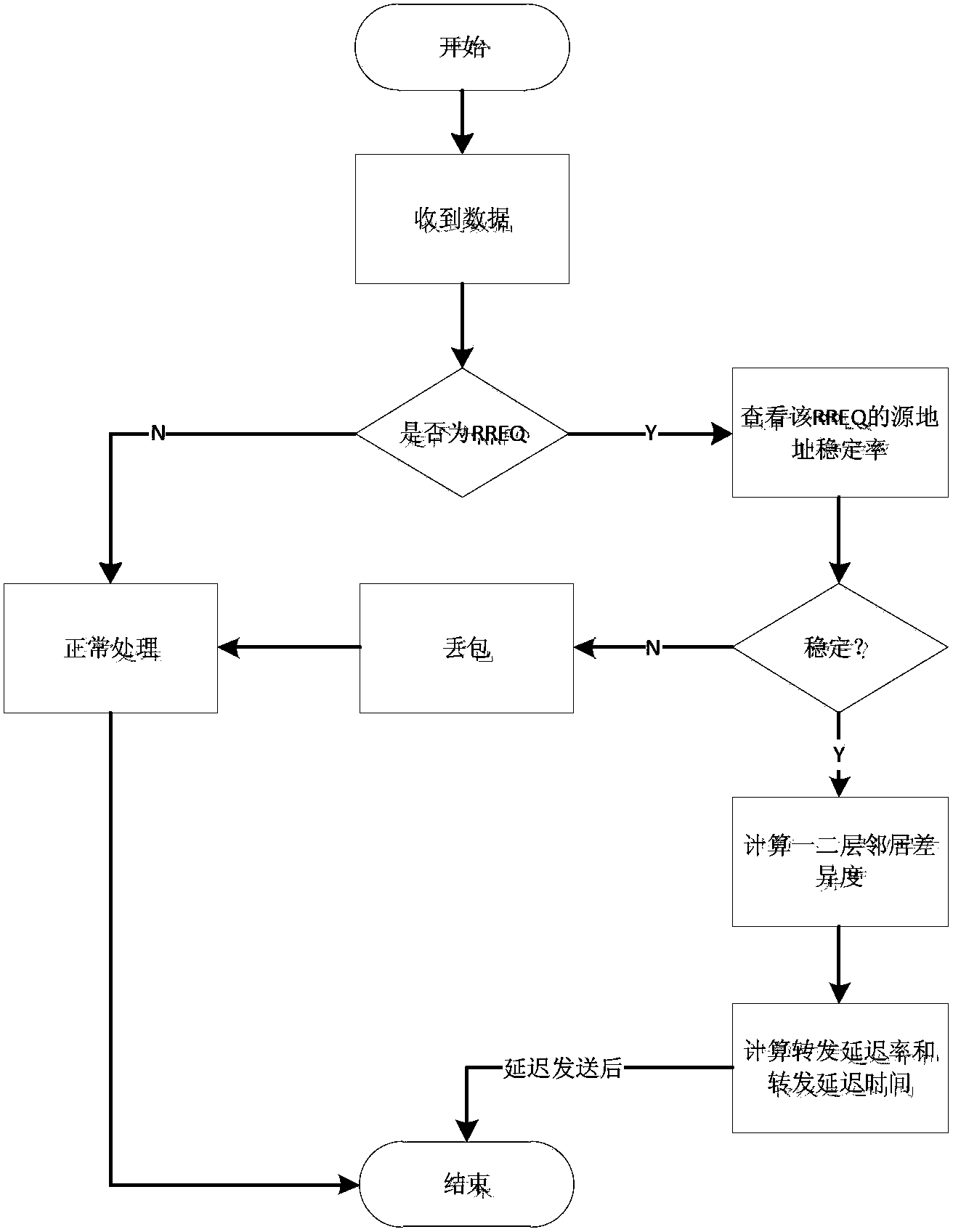An on-demand distance vector routing method for wireless ad hoc networks
A wireless ad hoc network and distance vector technology, applied in wireless communication, network topology, advanced technology, etc., can solve problems such as broadcast flooding, routing overhead, etc., to suppress routing request flooding, reduce complexity, and reduce power consumption Effect
- Summary
- Abstract
- Description
- Claims
- Application Information
AI Technical Summary
Problems solved by technology
Method used
Image
Examples
Embodiment Construction
[0036] The invention is mainly composed of expanding the function of Hello message, establishing a second-level neighbor table and increasing the function of route reply RREP hunting. Create a second-level neighbor table by extending the Hello packet; extend the RREQ message format to calculate the neighbor stability value, and each forwarding node will calculate the forwarding delay of RREQ according to the difference between the first-layer and second-layer neighbors; and route reply RREP by unicast Change to the broadcast method, and decide whether to "hunt" by evaluating the RREQ forwarding time difference, the difference between the first and second layers of neighbors, and the remaining hops. The communication performance of AODV routing protocol in wireless sensor network is improved through the above several ways.
[0037] Its concrete implementation method will be described below in conjunction with accompanying drawing:
[0038] First, if figure 2 The flow chart o...
PUM
 Login to View More
Login to View More Abstract
Description
Claims
Application Information
 Login to View More
Login to View More - R&D
- Intellectual Property
- Life Sciences
- Materials
- Tech Scout
- Unparalleled Data Quality
- Higher Quality Content
- 60% Fewer Hallucinations
Browse by: Latest US Patents, China's latest patents, Technical Efficacy Thesaurus, Application Domain, Technology Topic, Popular Technical Reports.
© 2025 PatSnap. All rights reserved.Legal|Privacy policy|Modern Slavery Act Transparency Statement|Sitemap|About US| Contact US: help@patsnap.com



